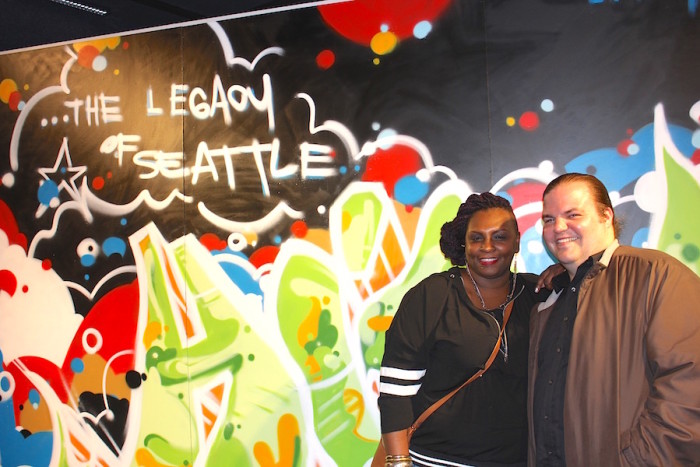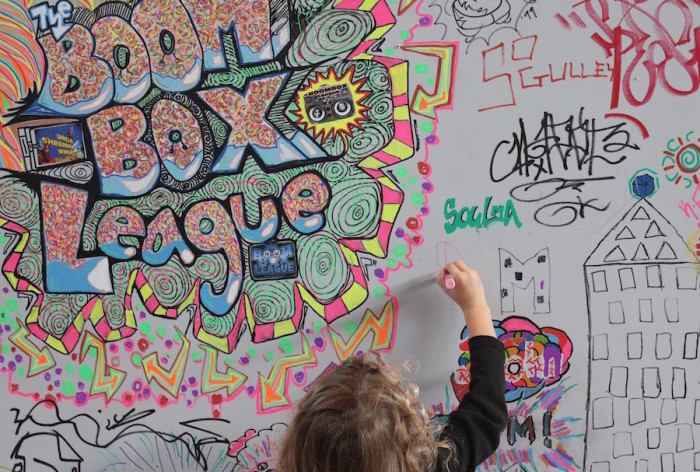
The Museum of History and Industry (MOHAI) known for exhibiting Seattle artifacts such as Lincoln’s Toe Truck and The Lusty Lady sign debuted “The Legacy of Seattle Hip-Hop” on Saturday. Luckily, they partnered up with curators Jazmyn Scott, The Town Entertainment promoter, and drummer/composer Aaron Walker-Loud of Big World Breaks.
“Through working together over the years with all of the artists we have been blessed to collaborate with and learn from within the Northwest arts scene as a whole, a ferocious underdog spirit … continues to thrive,” Walker-Loud wrote in an email response.
Longtime contributors to Seattle’s hip-hop scene themselves, Scott and Walker-Loud (who are also married) showed their appreciation for many of the artists and moments in Seattle’s hip-hop history often missed between the glory and worldwide fame of Sir Mix-A-Lot and Macklemore. (An extensive timeline featured in the exhibit starts Seattle’s hip-hop history in 1979 with The Emerald Street Boys).
“This exhibit would have been easily rich with noted accomplishments and unique culture even if it was curated by others 10, 20 years ago,” said Walker-Loud. “Yet we feel honored to have been selected to take this anthropological challenge on right now, especially so that Seattle hip-hop foundation entities such as the Emerald Street Boys and the DVS Crew can enjoy celebrating what they helped … build at this exciting time in our city’s cultural storyline.”

Appropriately eclectic, the exhibit features graffiti, interactive beats and Seattle’s homespun hip-hop fashion. Old interviews from “Coolout Network: Northwest Hip Hop and Music,” a channel that started airing on public access in 1991 (and now on YouTube), showed some of hip-hop history’s rarest and finest moments.
Many of Saturday’s MOHAI exhibit attendees, entertained by these old episodes, were part of these moments, including “Coolout Network” co-director Georgio Brown. They gathered around a collage of local CD covers, reminiscing when the albums were released.
In addition to mainstream media embracing hip-hop culture and a recent surge of global interest in Seattle with the popularity of artists like Massive Monkees, Shabazz Palaces, Macklemore and Thee Satisfaction, Walker-Loud attributes much of the movement’s recent growth to established hip-hop artists mentoring other artists.
Institutions have also thrown their support behind the Seattle movement, be it venues, media, event producers, arts education organizations, or public and private funding sources.
“All this being said, the parallel institutions mentioned above have a great deal of work to catch up [on] in fully supporting and collaborating with a broader cross-section of Seattle’s hip-hop scene,” said Walker-Loud. “This exhibit at MOHAI will hopefully inspire more entities and individuals to become actively engaged as fans, investors, educators, mentors, collaborators and supporters.”
“The Legacy of Seattle Hip-Hop” runs through May 1, 2016, with MOHAI showcasing a different Seattle DJ every second Saturday of the month as part of the museum’s “Saturday Spin” series.

